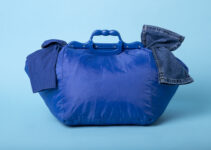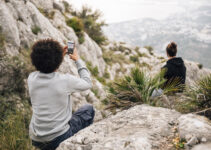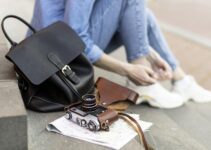How to carry a bridge camera without a camera bag?
How do you carry your bridge camera when you want to travel light? For photography enthusiasts, finding the right balance between convenience and protection is essential, especially when it comes to carrying your gear.
A bridge camera, with its versatile zoom capabilities, can be a fantastic companion for capturing stunning images on the go. However, not everyone wants to lug around a bulky camera bag.
Fortunately, there are several creative ways to transport your bridge camera safely without sacrificing accessibility or style.
Let’s explore some practical methods to ensure your camera is always within reach while keeping it secure.
Here take a look diference between billigham fibernyte and canvas?
Can you carry a bridge camera without a camera bag?
Yes, you can carry a bridge camera without a dedicated camera bag, but there are a few considerations to keep in mind.
Comfort and Protection: Without a bag, ensure the camera is secure.
Use a wrist strap or neck strap to prevent accidental drops.
Weather Considerations: If you’re in an area with unpredictable weather, protect the camera with a rain cover or a lightweight jacket to shield it from moisture.
Accessibility: Carrying the camera around your neck or on your shoulder allows for easy access, but be cautious about bumps or knocks that could damage the camera.
Storage: If you’re out for an extended period, think about where you’ll store extra batteries and memory cards, as these may need to be kept in your pockets.
Overall, while it’s feasible to carry a bridge camera without a bag, take steps to ensure its safety and accessibility.
Is it worth to carry a bridge camera without a camera bag
Carrying a bridge camera without a camera bag can be worth it, depending on your needs and circumstances.
Convenience: If you’re on a casual outing or traveling light, having the camera easily accessible around your neck or shoulder can enhance spontaneity, allowing you to capture moments quickly.
Weight and Bulk: Bridge cameras can be relatively lightweight, so for short trips, you might prefer to avoid the extra bulk of a bag.
Protection Risks: However, not using a bag exposes the camera to potential damage from bumps, moisture, or dust. Without proper protection, the risk of scratches or impact damage increases, especially in crowded or rugged environments.
Accessories: Consider whether you need to carry additional accessories like batteries or memory cards; without a bag, you’ll need pockets or other means to hold these essentials.
Here, how do you support a heavy camera lens?
Ultimately, weigh the convenience against the risk of damage to decide if it’s worth it for you.
Things to know before carry a bridge camera without a camera bag
Before carrying a bridge camera without a camera bag, consider the following important factors:
- Protection: Ensure the camera is adequately protected from bumps and scratches. Use a padded strap or a lens cap to safeguard against impacts and dust.
- Weather Conditions: Be mindful of the weather. If rain is in the forecast, consider using a waterproof cover or a lightweight jacket to shield the camera from moisture.
- Accessibility: Carry the camera in a way that allows for quick access, such as using a neck or wrist strap. This will help you capture spontaneous moments without fumbling.
- Comfort: Ensure the strap is comfortable for prolonged use. A padded strap can help reduce neck or shoulder strain.
- Storage for Accessories: Plan for extra batteries and memory cards. Pockets may suffice, but ensure they’re secure to avoid losing essentials.
Taking these factors into account will help you enjoy your photography experience while minimizing risks.
How to carry a bridge camera without a camera bag?
Carrying a bridge camera without a camera bag requires some planning to ensure safety and accessibility. Here are some tips:
- Use a Neck Strap or Wrist Strap: Attach a comfortable neck strap or wrist strap to keep the camera secure while allowing easy access for quick shots.
- Protect the Lens: Always use a lens cap when the camera is not in use to prevent scratches. Consider using a UV filter for additional lens protection.
- Secure the Camera: Carry the camera in front of you or at your side, ensuring it’s close to your body to avoid accidental bumps or drops.
- Dress for Functionality: Wear clothing with secure pockets for storing extra batteries or memory cards, preventing them from getting lost.
- Be Mindful of Surroundings: Stay aware of your environment to avoid potential hazards, and be cautious in crowded areas to protect the camera from damage.
Following these tips will help you carry your bridge camera comfortably and safely.
Here, how do you unwrinkle a prade nylon camera bag?
7 Tips to carry a bridge camera without a camera bag
1. Use a Comfortable Neck Strap
A comfortable neck strap is essential when carrying a bridge camera without a bag. Opt for a padded strap that distributes weight evenly, reducing strain on your neck during extended use.
A well-fitted strap allows you to easily access the camera for spontaneous shots without fumbling. Make sure the strap is adjustable to suit your height and preferred carrying style.
Additionally, look for straps with quick-release features for added convenience when you want to set the camera down quickly.
If you prefer a different style, consider a wrist strap that offers a secure grip while keeping the camera within reach.
Ultimately, the right strap enhances your photography experience by making it easier to carry your camera comfortably throughout the day.
2. Protect the Lens
Protecting the lens of your bridge camera is crucial when carrying it without a bag. Always use a lens cap when the camera is not in use to prevent dust, scratches, and moisture from damaging the lens.
Consider investing in a UV filter; it can serve as an additional layer of protection while improving image quality. When you’re on the go, be mindful of how you handle the camera, ensuring it doesn’t come into contact with rough surfaces.
If you find yourself in environments with high dust or moisture, keep the camera covered with a lightweight cloth or a dedicated lens cover.
This simple precaution can save you from costly repairs and maintain the integrity of your camera’s optics, allowing you to capture high-quality images whenever inspiration strikes.
3. Secure the Camera Close to Your Body
Securing your bridge camera close to your body helps prevent accidental drops and bumps.
Carry the camera in front of you or at your side, holding it with one hand while using the strap for additional support. This positioning not only provides quick access but also keeps the camera shielded from potential hazards in crowded spaces.
When moving through tight areas, such as crowded streets or nature trails, ensure the camera is snug against your body to avoid collisions. Be conscious of your surroundings, adjusting your grip and position as needed to maintain control.
Here, how to clean manfrotto camera bag?
By keeping the camera close, you can minimize the risk of damage while still being ready to capture spontaneous moments, enhancing your overall photography experience.
4. Dress for Functionality
Dressing for functionality is key when carrying a bridge camera without a bag. Choose clothing with secure pockets to hold extra batteries, memory cards, and other small accessories.
Look for jackets, vests, or pants designed for photographers, which often feature multiple pockets with zippers or Velcro closures to keep your gear safe and organized.
Ensure your pockets are deep enough to prevent items from falling out while you move. If you prefer a more casual look, consider wearing cargo shorts or pants with large pockets.
Additionally, avoid overly loose or baggy clothing, which can snag on the camera or interfere with your movements.
Dressing strategically not only keeps your essentials handy but also allows you to enjoy a hassle-free photography experience.
5. Be Mindful of Weather Conditions
Weather conditions can significantly impact your bridge camera’s performance and longevity, so being mindful of them is crucial.
If you’re carrying the camera without a bag, keep an eye on the forecast and prepare for unexpected changes. In case of rain, consider using a waterproof cover or a lightweight, breathable jacket to shield the camera from moisture.
When in humid conditions, avoid exposing the camera to drastic temperature changes to prevent condensation inside the lens.
In sunny weather, be cautious of overheating, which can affect battery life and performance; store the camera in the shade when not in use.
If you’re in a dusty environment, keep the camera covered or minimize exposure to prevent dust from settling on sensitive components.
By anticipating weather conditions, you can better protect your camera and ensure it performs optimally.
6. Use a Quick-Access Holster or Clip
Using a quick-access holster or clip can enhance convenience when carrying a bridge camera without a bag. These accessories allow you to attach the camera securely to your belt or waistband, keeping it accessible while preventing accidental drops.
A holster typically features a snug fit and can often be adjusted for a custom fit, while clips allow for quick attachment and detachment.
Here, is it safe to pack a camera bag when going through the airpot security?
This setup is especially useful for those who want to keep their hands free while walking or engaging in other activities. Look for options with padding or a locking mechanism to ensure the camera stays secure.
With a quick-access solution, you can transition seamlessly between carrying and shooting, making your photography experience more enjoyable and efficient.
7. Stay Aware of Your Surroundings
Staying aware of your surroundings is essential when carrying a bridge camera without a bag. Being mindful of your environment helps prevent accidental damage to your camera and allows you to capture spontaneous moments.
Pay attention to crowded spaces, where people or objects may bump into you, and position yourself strategically to avoid collisions.
When walking through areas with uneven terrain, maintain a steady grip on the camera to prevent drops. Additionally, be conscious of your camera’s positioning when navigating tight spaces, like doorways or narrow paths, to avoid snagging or scratching the lens.
By staying alert and aware, you can enhance your safety and protect your equipment, ensuring a smoother photography experience while remaining ready to seize the perfect shot.
7 Steps to carry a bridge camera without a camera bag
1. Choose the Right Strap
Selecting a comfortable strap is the first step in carrying a bridge camera without a bag. A padded neck strap or a wrist strap helps distribute weight evenly, reducing strain on your neck or wrist.
Ensure the strap is adjustable for a custom fit, allowing easy access to the camera. Look for quick-release options for convenience when you want to set the camera down briefly.
The right strap enhances your carrying experience, making it easier to capture spontaneous moments without discomfort.
2. Protect the Lens
Lens protection is crucial when carrying your bridge camera without a bag. Always use a lens cap when the camera is not in use to prevent dust and scratches.
Consider adding a UV filter for additional protection while improving image quality.
Here, 10 best shimoda camera bag?
When you’re out and about, be cautious about how you handle the camera to avoid accidental contact with rough surfaces.
This simple practice helps maintain the lens’s integrity, ensuring your camera remains ready for high-quality shots at all times.
3. Keep the Camera Secure
To prevent accidental drops, keep your bridge camera secure while carrying it.
Hold the camera close to your body, using one hand to grip it and the strap for added support. Carrying it in front of you or at your side keeps it safe from bumps in crowded spaces.
When walking, maintain a steady grip and be mindful of your surroundings to avoid obstacles. This approach not only protects your camera but also allows for quick access when you want to capture a spontaneous shot.
4. Utilize Clothing with Pockets
Wearing clothing with secure pockets is essential when carrying a bridge camera without a bag.
Choose garments that have deep, zippered, or Velcro pockets to store extra batteries, memory cards, and other small accessories. This prevents your essentials from falling out while you’re on the move.
Additionally, consider vests or jackets designed for photographers, which often have multiple pockets for better organization.
Functional clothing enhances your convenience, allowing you to focus on photography without worrying about losing your gear.
5. Be Mindful of Weather Conditions
Weather can impact your bridge camera, so it’s important to stay mindful of conditions while carrying it.
If rain is forecasted, bring a waterproof cover or a lightweight jacket to protect the camera from moisture. In humid environments, avoid drastic temperature changes to prevent condensation inside the lens.
Additionally, keep the camera shaded on sunny days to prevent overheating. Being aware of the weather helps you take proactive measures, ensuring your camera remains safe and functional for capturing the perfect shot.
6. Consider Quick-Access Holsters
Using a quick-access holster or clip is an efficient way to carry your bridge camera without a bag.
These accessories securely attach the camera to your belt or waistband, keeping it easily accessible while preventing accidental drops. Look for holsters that offer a snug fit and adjustable features for added comfort.
Quick-release clips are also useful for transitioning between carrying and shooting. This setup allows you to keep your hands free while ensuring your camera is readily available for spontaneous photography moments.
7. Stay Aware of Your Environment
Staying aware of your environment is vital when carrying a bridge camera without a bag.
Here, shoulder pain what kind of camera bag?
Being mindful helps you avoid accidental damage and allows for quick reactions to spontaneous photo opportunities.
Keep an eye out for crowded areas where people may bump into you and position yourself strategically to avoid collisions. In uneven terrain, maintain a firm grip to prevent drops.
By being vigilant about your surroundings, you can enhance your safety and protect your equipment, making your photography experience smoother and more enjoyable.
5 Methods to carry a bridge camera without a camera bag
1. Use a Neck Strap
A neck strap is one of the most common methods for carrying a bridge camera without a bag.
It allows you to keep the camera secure and easily accessible while providing comfort during extended use. Choose a padded strap for added comfort, especially if you plan to wear it for long periods.
Make sure the strap is adjustable to fit your height and preferred carrying style. This method keeps the camera within reach for spontaneous shots while distributing the weight evenly, preventing strain on your neck.
2. Attach a Wrist Strap
A wrist strap is another practical method for carrying a bridge camera without a bag. This option provides a secure grip while allowing for quick access to the camera.
It is particularly useful for casual outings where you want to keep your hands free. Choose a wrist strap with padding for comfort and durability. This method prevents accidental drops while ensuring you can easily capture spontaneous moments.
A wrist strap also minimizes the risk of swinging or bumping the camera against objects, offering peace of mind during your photography adventures.
3. Utilize a Quick-Release Clip
Using a quick-release clip is an efficient way to carry your bridge camera without a bag.
These clips can be attached to your belt or waistband, providing a secure way to hold the camera while keeping it easily accessible. Look for clips that have a locking mechanism to prevent accidental detachment.
This method allows you to carry the camera hands-free while ensuring it’s readily available for spontaneous shots.
Quick-release clips are ideal for those who prefer minimal bulk and want to transition easily between carrying and shooting.
4. Wear a Camera Harness
A camera harness is an excellent method for carrying a bridge camera without a bag, especially for photographers who require additional support and stability.
This method distributes the weight across your body, reducing strain on your neck and shoulders.
Harnesses often feature adjustable straps that allow for a custom fit, keeping the camera secure and close to your body.
Here, how to add camera padding to bag?
Some models even include extra attachments for holding additional gear, such as lenses or batteries. A camera harness provides comfort and convenience, making it ideal for long shooting sessions or outdoor photography.
5. Dress with Functional Clothing
Wearing functional clothing with secure pockets is a practical method for carrying a bridge camera without a bag.
Choose garments with deep, zippered, or Velcro pockets that can securely hold extra batteries, memory cards, and other small accessories. This setup allows you to keep essentials close at hand while keeping your hands free for carrying the camera.
Additionally, consider wearing vests or jackets designed for photographers, which often come with multiple pockets for better organization. This method enhances your convenience and ensures that your gear is easily accessible when inspiration strikes.
5 Benefits to carry a bridge camera without a camera bag
1. Increased Accessibility
One of the primary benefits of carrying a bridge camera without a bag is increased accessibility.
With the camera easily accessible around your neck or on a strap, you can quickly capture spontaneous moments without fumbling through a bag.
This immediacy allows you to respond to unexpected photo opportunities, enhancing your ability to document experiences in real-time.
Being able to grab your camera quickly means you won’t miss out on fleeting moments, making it ideal for events, street photography, or travel.
This increased accessibility fosters a more enjoyable and engaging photography experience.
2. Reduced Bulk and Weight
Carrying a bridge camera without a bag significantly reduces bulk and weight, making it easier to move around.
This benefit is particularly valuable during long outings or when navigating crowded areas where a bag might hinder your mobility.
By eliminating the need for a bag, you can travel lighter and more comfortably, allowing for greater freedom of movement.
This simplicity encourages more spontaneous photography as you won’t be encumbered by extra gear, leading to a more enjoyable experience.
Overall, a lighter load allows you to focus more on your photography rather than managing heavy equipment.
3. Enhanced Comfort
Carrying a bridge camera without a bag can enhance comfort, especially when using a well-designed strap or harness.
By distributing the weight across your body, a good strap minimizes strain on your neck and shoulders, making it easier to carry the camera for extended periods.
Here, can i bring my camera bag on a plane?
This comfort encourages longer photography sessions without fatigue, allowing you to fully immerse yourself in capturing moments.
Additionally, avoiding a bulky bag can create a more streamlined experience, letting you move freely without worrying about the weight of a bag or the inconvenience of managing extra equipment.
4. Increased Spontaneity
When you carry a bridge camera without a bag, you foster increased spontaneity in your photography.
The ease of access allows you to react quickly to unexpected moments, whether it’s a beautiful sunset, a candid street scene, or an interesting subject.
This freedom encourages you to explore your surroundings more actively and creatively, capturing shots that might otherwise be missed.
By being ready to shoot at a moment’s notice, you can take advantage of unique opportunities that arise during your adventures, leading to a more dynamic and engaging photography experience.
5. Cost-Effective Solution
Carrying a bridge camera without a bag can be a cost-effective solution, as it eliminates the need to invest in an additional camera bag or accessories.
Many photographers often overlook the cost of bags designed specifically for camera gear, which can add up over time.
By using what you already have—such as a comfortable strap or clothing with pockets—you can effectively transport your camera without incurring extra expenses.
This approach allows you to allocate your budget to other essential photography gear, such as lenses or memory cards, maximizing your resources while enjoying the convenience of carrying your camera effortlessly.
Related faq’s
What is the best way to carry your camera when traveling?
The best way to carry your camera when traveling is to use a comfortable, padded camera strap or harness.
This allows for easy access and reduces strain on your neck and shoulders during long periods of use.
Consider a quick-access holster or clip for hands-free convenience, especially in crowded areas. Always protect the lens with a cap when not in use, and keep extra batteries and memory cards in secure pockets or pouches.
Additionally, choose clothing with deep pockets or wear a camera bag designed for travel to protect your gear while keeping it readily accessible for spontaneous shots.
How do you carry a DSLR camera in a backpack?
To carry a DSLR camera in a backpack, start by using a dedicated camera insert or padded divider to protect the camera and lens from impacts.
Place the camera with the lens facing up to prevent pressure on the lens elements. Secure any additional lenses, batteries, or accessories in designated pockets or compartments within the insert to keep them organized.
Ensure the backpack has a padded back and shoulder straps for comfort, especially during long periods of wear.
When not in use, cover the camera with a lens cap and keep the backpack closed to protect against dust and moisture.
What’s the best way to carry a DSLR without looking like a dork?
To carry a DSLR without looking awkward, opt for a stylish, low-profile camera bag or backpack that resembles regular fashion gear.
Choose a sling bag or messenger bag designed for photographers, as these can be worn casually while keeping your camera secure.
Use a comfortable neck strap or wrist strap to avoid bulky harnesses that may draw attention. Consider wearing the camera across your body, allowing for easy access without appearing overly professional.
Additionally, choose outfits that complement your style, making the camera a natural extension of your look rather than an eye-catching accessory.
How do you carry your cameras around in casual situations?
In casual situations, I prefer to carry my cameras using a comfortable, adjustable neck strap that allows for easy access while maintaining a relaxed look.
If I have multiple lenses or accessories, I use a stylish sling bag or messenger bag that doesn’t scream “camera bag,” ensuring it blends with my casual attire. I keep the camera secure by carrying it in front or at my side, ready for spontaneous shots.
Here, 10 best stylish DSLR camera bags?
Additionally, I often dress in outfits with pockets for extra batteries or memory cards, keeping everything organized without compromising comfort or style.
Tips for carrying around camera without looking strange?
To carry your camera without looking strange, opt for a stylish camera bag or backpack that resembles everyday fashion accessories.
Choose a low-profile camera strap or wrist strap that blends with your outfit instead of a bulky harness. Position the camera across your body or at your side for a casual appearance.
Wear clothing with pockets to hold extra gear, keeping everything organized while maintaining a relaxed look.
Additionally, consider using a lens cap and keeping the camera covered when not in use to prevent drawing attention. Ultimately, the key is to integrate your camera seamlessly into your daily style.
How do you keep your equipment protected when traveling
To keep your equipment protected while traveling, start by using a dedicated camera bag or backpack with padded compartments designed for gear.
Always use lens caps and protective filters on your lenses to prevent scratches. Consider adding foam inserts for extra cushioning.
During travel, keep your equipment away from extreme temperatures and humidity, opting for waterproof or weather-resistant bags when necessary.
Utilize silica gel packets to absorb moisture inside your bag. When checking bags, remove your camera and carry it as a personal item whenever possible. Lastly, be mindful of your surroundings to avoid accidental bumps or drops.
How can I carry around a camera safely wherever I go?
To carry your camera safely wherever you go, start by using a well-padded camera bag or backpack with compartments designed for gear protection.
Opt for a comfortable strap—either a neck or wrist strap—to keep the camera secure and easily accessible. Always use a lens cap and, if possible, a protective filter to guard against scratches and dust.
Be mindful of your surroundings to avoid bumps or drops, and consider using a quick-access holster for hands-free carrying.
Additionally, pack extra batteries and memory cards in secure pockets or pouches to ensure you’re always prepared for spontaneous shots.
Conclusion
Carrying a bridge camera without a camera bag is entirely feasible and can enhance your photography experience when done thoughtfully.
By utilizing comfortable straps, quick-access clips, or functional clothing with pockets, you can keep your camera secure and readily accessible.
Protecting the lens and being mindful of weather conditions will help ensure your equipment remains in top condition.
Staying aware of your surroundings minimizes the risk of accidental damage.
Embracing a streamlined approach allows you to capture spontaneous moments effortlessly, making your photography journey more enjoyable and freeing you to focus on creativity rather than managing bulky gear.






